
16 minute read
Skin cancer - golf’s silent killer
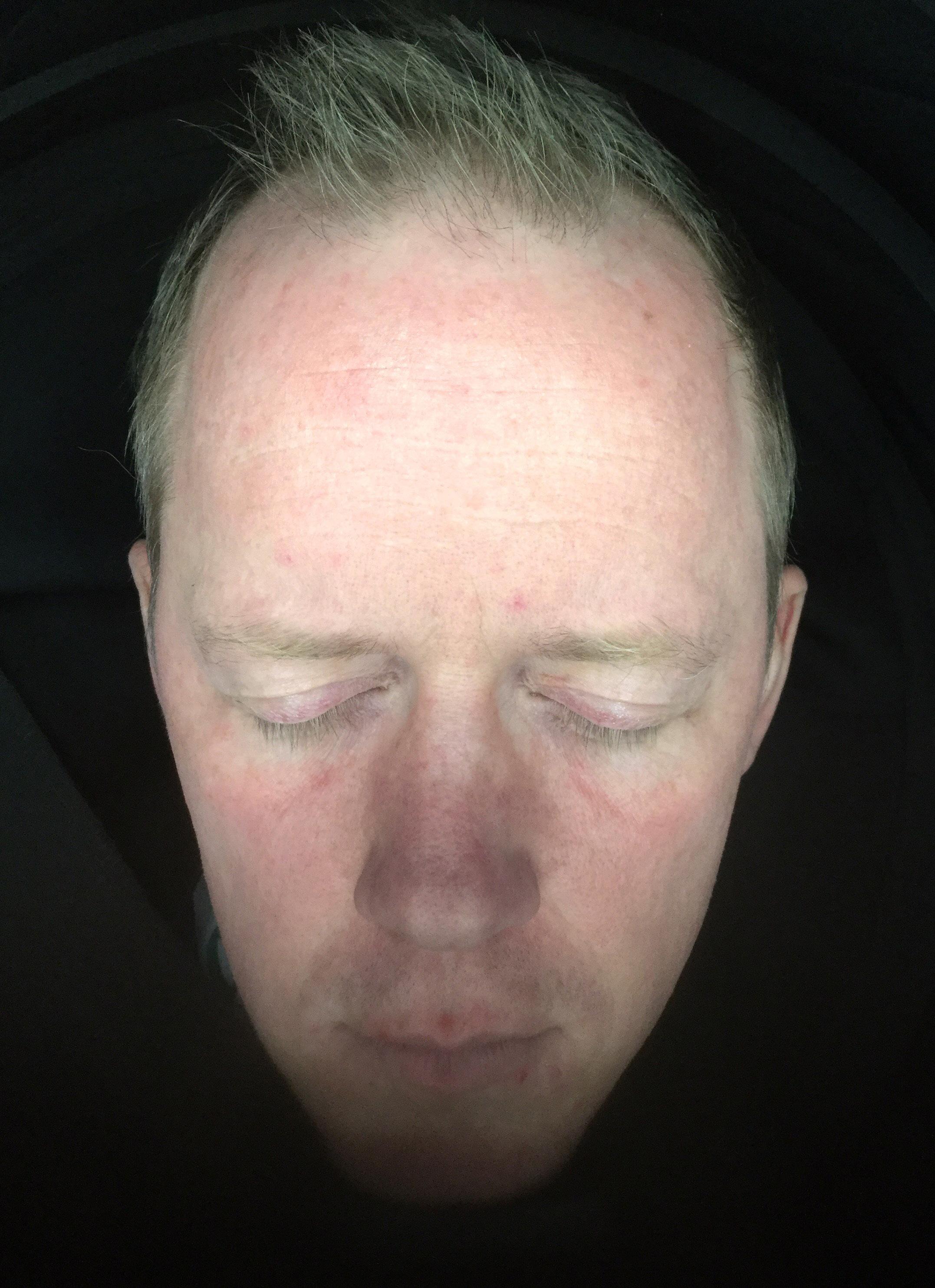
Advertisement
The Golf Club Manager editor Steve Carroll thought he was vigilant when it came to the sun. Then he saw his face under ultra-violet light
Steve Boothroyd has paused for dramatic effect. I’ve just lifted my head out of a contraption that looks like something they took pictures with 150 years ago and, if I’m honest, I’m a little bit apprehensive.
Without protection, I can last about 10 minutes in the midday sun. Then I can just feel my skin heating up and I’m compelled to run for shade.
Fair haired, and fairer skinned, I’ve used sun cream religiously all my life. From the start of March until the end of October, I won’t step on a golf course without it.
I’m not talking about a brief sliver wiped across the forehead, either. I use it in volume and I use it often.
I wear a hat constantly. I have wrap around polarising sunglasses that maximise protection from ultra violet light.
And yet, as I wait to see the damage that 43 years on the planet has done to my skin, I’m not confident about the results.
The picture is about to be revealed and, whatever it was shows, that image previously unseen will be a permanent fixture in my brain.
“We want people to think about why, and how, their skin is getting damaged and what they can do about it,” says Boothroyd, the man behind the unusual looking camera and a volunteer at Skcin UK (The Karen Clifford Melanoma & Skin Cancer Charity).
“It’s only education and what we want to do is raise the awareness of people and say ‘actually, the damage is being caused but you don’t necessarily always see it’.
“You’ve got damage you didn’t know was there, it’s being caused by the sun, so what can you do about it?
“That allows us to think about the five S’s of sun safety: slipping on clothing, slopping on cream, slapping on a hat, sliding on some sunglasses and seeking the shade wherever you can.”
There has been a 45 per cent increase in the number of skin cancer cases in the UK over the past half decade.
Some 250,000 people are diagnosed each year, a figure Skcin chief executive Marie Tudor actually believes to be an underestimation.
SKCIN UK After Karen Clifford died on New Year’s Eve in 2005, her family set out to fill the void that existed in skin cancer awareness, prevention and early detection in the UK. They gained charitable status in 2006 and believe that, in order to reverse the soaring rates of the disease, education on a national level is paramount. They provide dedicated, bespoke and diverse national accreditation schemes and campaigns and initiatives. For more information, visit skcin.org
“The skin is the biggest organ in the body,” she says. “It is the only cancer you can see and 86 per cent of cases are preventable. So why don’t we do something about it?
“It’s costing the NHS £350 million a year. All that money is being spent and it’s an absolute nobrainer that we need to be taking protection more seriously.”
That’s clearly an imperative for golfers – a sport that takes place under the unforgiving glare of the sun’s rays.
I’ve played the sport all of my adult life and a fair chunk of my childhood.
My job takes me all over the country and I can be on a golf course, for hours at a time, three to four times a week in the height of the season.
Which is why, even despite the precautions I take, I’m nervous.
Steve shows me the first picture. It’s me as I am, a slightly unflattering image but it’s the face I see in the mirror every morning.
Then he shows me the second portrait, this time of my face under ultra-violet light. I gasp. It’s covered in dark spots.
“They look a bit like freckles but they are signs of sun damage,” explains Boothroyd.
“The ultra violet is absorbed by a substance called melanin. That is your skin’s natural protectant and it’s a pigment that absorbs ultra violet really well.
“If the melanin forms a continuous film and floats to the
WHAT KINDS OF SKIN CANCER ARE GOLFERS AT RISK FROM?
There are three main types…
Basal Cell Carcinoma (BCC) is a cancer of the basal cells and very common, accounting for around 75% of all skin cancers in the UK. Most BCCs are very slow growing and rarely spread to other parts of the body. Occasionally, some BCCs are aggressive and, if left untreated, may spread into the deeper layers of the skin and sometimes to the bones. That can make treatment difficult, so it is always best to catch them early. In some cases, a BCC may come back in the same area. That’s known as a ‘local recurrence’. Initially, a BCC can take the appearance of a small ‘pearly’ bump, similar to a flesh-coloured mole or a pimple that doesn’t go away. They can look dark, shiny pink or appear in the form of red patches that are slightly scaly. Another symptom to watch out for is a waxy, hard skin growth.BCCs are known to be fragile and can bleed easily.
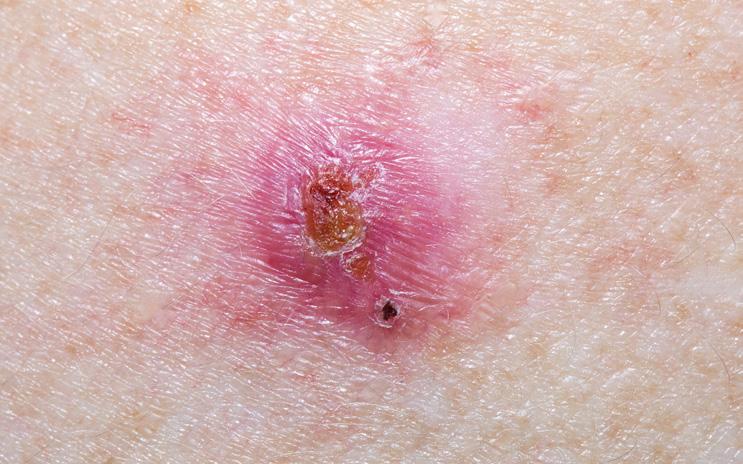
Squamous cell carcinoma (SCC) is our second most common type of skin cancer. It has a similar growth pattern and treatment outcome to a BCC but is more likely to spread to other parts of the body if left untreated. Occasionally they can also act aggressively and spread at an earlier stage. An SCC can appear as flat, scaly skin patches, open sores, raised red lumps or look like a wart. While some have crusty, bloody or oozing patches, this type of skin cancer can also resemble mostly normal skin.
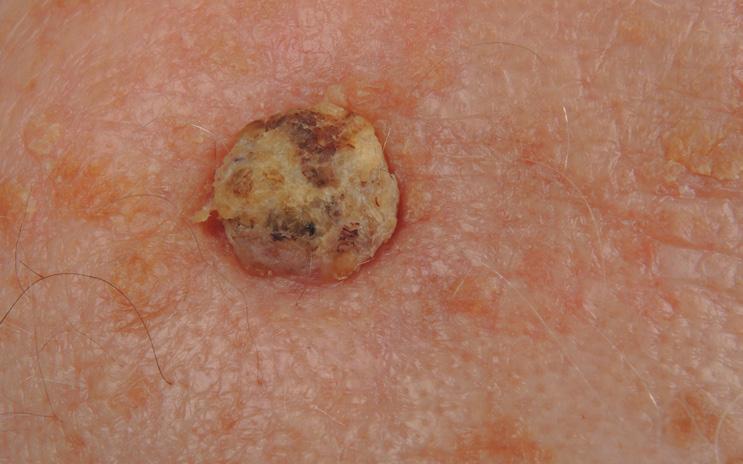
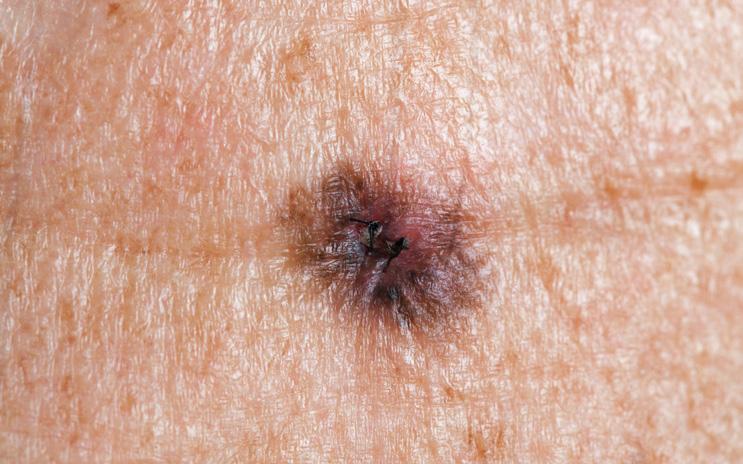
Melanoma is less common than the others and behaves very differently. It can grow quickly and therefore needs to be treated as early as possible. Melanoma develops from melanocytes that start to grow and divide more quickly than usual and spread into the surrounding surface layers of skin. When they grow out of control, they usually look like a dark spot or an unusual-looking mole. If not removed, these cells can grow down into the layers of the skin, reaching tiny blood vessels and lymphatic vessels which means they can to travel to other parts of the body.
surface then you would call it a tan. You say ‘what a fantastic tan I’ve got’.
“In reality, what you’ve got is very consistent damage. A dermatologist would say there is no such thing as a healthy tan. A tan is simply a sign of damage.
“So what we can see here is damage that sits underneath the skin. You can’t see it at the surface but you can below. That’s the wow moment.
“The reason you can see the little melanin spots is that your skin has detected that damage is being done, or detected there is UV around, and it starts to protect itself.
“100% of people who are of a certain skin type will show some sort of damage. We don’t use sun cream all the time, or protect ourselves all the time and we don’t sit in a dark box all the time.
“Going out in the sun is good, we like the warmth, we like being outside and it is really healthy for you.
“It’s all good stuff but we don’t protect ourselves and, from an early age, we are encouraged to be outside and we don’t always wear sun protection.
“Unless you are wearing sun protection 100% of the time, from the minute you walk out of the house to the minute you walk back in, you are going to get some level of damage.”
If that was an eye-opener for me, then it should be for golf clubs too – a venue where plenty of staff, whether that’s greenkeepers, starters, or staff serving food and beverage to golfers lodged onto the terrace, can find themselves working outside a significant proportion of the time.
It’s why Skcin have launched Sun Safe Workplaces, the first and only accreditation scheme of its kind, to try and prevent skin cancer
through the promotion of sun safety in the workplace.
Tudor explained: “It’s a national, annual accreditation scheme developed by Skcin to advise employers and educate outdoor workers on the importance of sun safety as a serious health and safety issue.
“It is a free online tool available to all UK companies that employ any number of outdoor workers. The scheme gives them access to a comprehensive range of free resources to help them implement a suitable sun safety policy while educating their employees on all aspects of skin cancer prevention and early detection.
“Golf greenkeepers and managers have a duty of care to educate their employees about the health implications the sun can have, the importance of appropriately protecting their skin and regularly checking their skin for signs of change.
“In addition, employers have a duty to ensure the provision of appropriate protection from the sun.

“Sun Safe Workplaces effectively addresses these issues and provides companies with all the necessary help and guidance to achieve their four step Sun Safe Workplaces Accreditation.”
Golf clubs need to take four measures to gain certification: Risk assessment – carrying out a full solar UVR risk assessment that is used to identify employees who have a high risk of exposure to solar UVR and situations or work systems where high exposure to solar UVR occurs Implement sun protection control measures – Employers and employees work together to implement changes that minimise the risk of exposure to solar UVR
Training employees about solar UV and skin cancer prevention and early detection – providing information, instruction, training and supervision of control measures
Sun protection policy – producing and uploading a full sun protection policy as a written document that records why and how the solar UVR risk is to be managed
More than 600 companies have, so far, registered to gain their Sun Safe Workplaces Accreditation.
“This is 43 years of sun exposure,” concludes Boothroyd as we scan the picture of my heavily marked face.
“This photograph is unique to you. Nobody else has a photograph like this.
“Now check your skin on a regular basis. Wherever you expose your skin, there is a risk of skin cancer or some damage possibly leading to skin cancer.
“It’s checking your back, legs, soles of your feet, toenails.
“If you see anything you don’t feel comfortable with go and see your GP, get taken to a dermatology clinic and they will then make an assessment using the tools, skills and knowledge they have.”
You can learn more about Skcin’s accreditation scheme by visiting sunsafeworkplaces.co.uk
The GCMA’s trusted payment solution for golf club membership fee collections
For over 25 years Fairway Credit has helped thousands of golfers play the sport they love. In the process, we have helped hundreds of golf clubs collect membership fees, removing the administration burden, allowing them to do what they do best, run a great golf club.
“I have been using Fairway Credit for over 20 years now at a wide range of clubs. It provides a modern method of paying subscriptions that suits younger members who are used to monthly direct debits, as well as providing an affordable scheme for those on fixed incomes. “
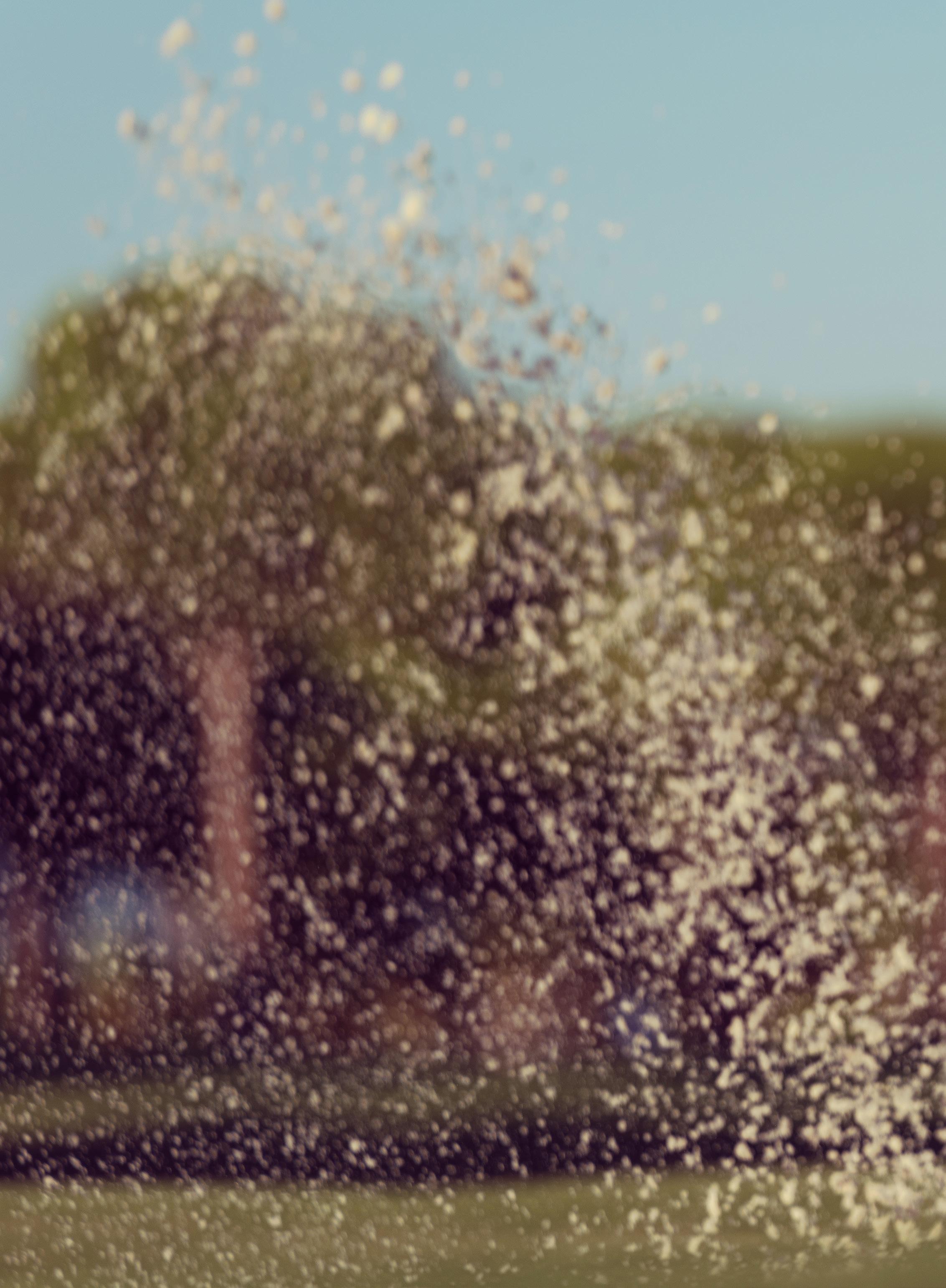
Ganton Golf Club
Come and join us now!
strategic partner

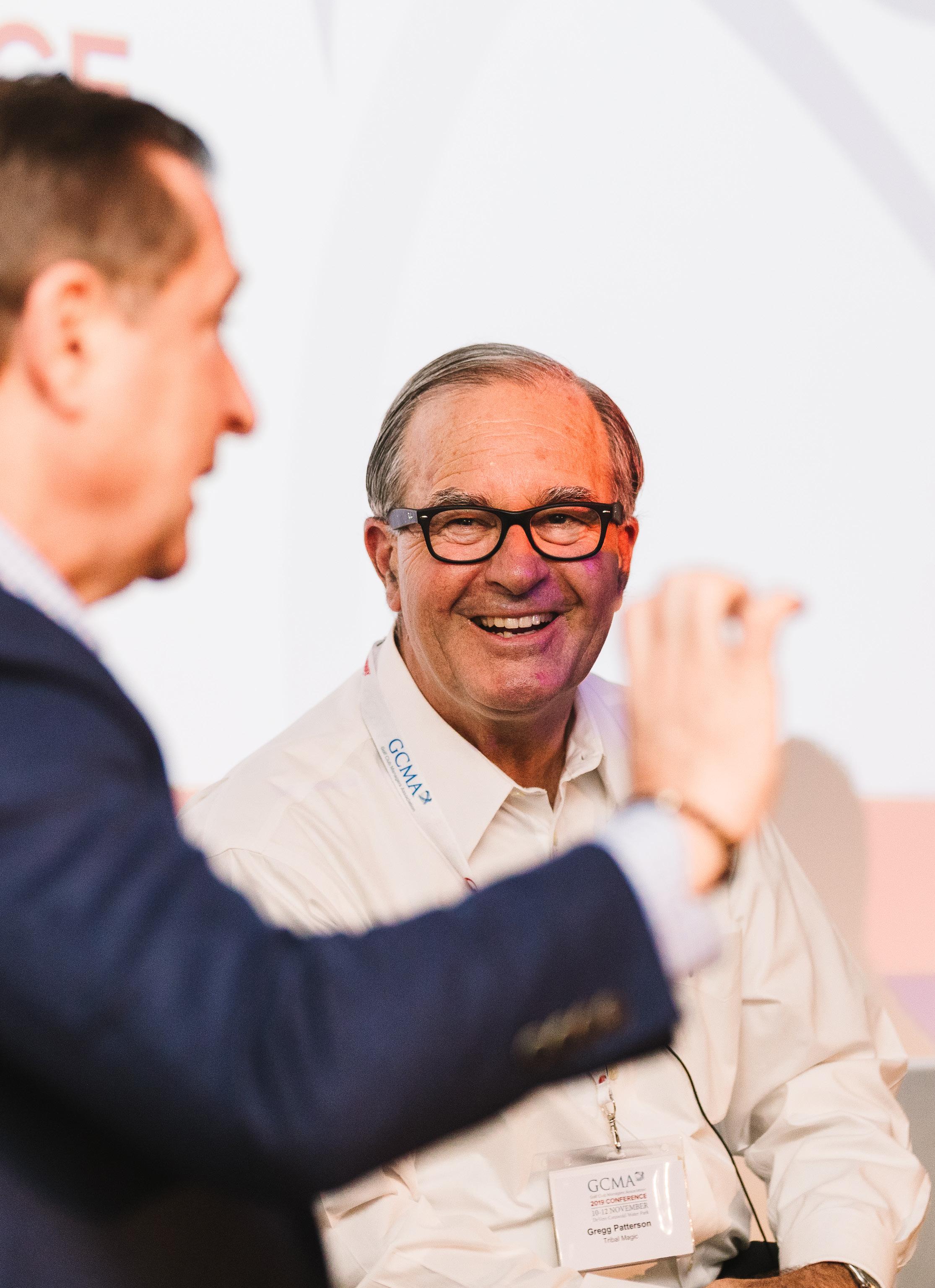
The importance of BEING SOCIAL
It’s emotions that tie people to a golf club – whether that’s staff or members. Gregg Patterson, former general manager of The Beach Club, in California, and founder of Tribal Magic!!!, explains…
Are you a manager that greets the members, or one that’s too ‘busy’ to get away from the office desk? If you’re the latter, then you’re falling foul of Gregg Patterson’s Social KPIs and you may not be getting the best out of your club or members. Let Gregg explain the principle and why being a more visible presence in your clubhouse and locker room is so important…
What are Social KPIs? Social KPIs are about the emotional side of the club experience. It’s not about numbers. It’s about the interaction between members and staff, members and members, staff and staff.
I’m talking about gestures that can be identified – specific actions that can be taken that are reflective of a caring on the part of the people who are talking.
Here’s an example. One of the Social KPIs I use, and will evaluate a club by, is how many hand-written birthday cards does the general manager send to the members?
I send it to the member and to their spouse. With staff, we used to send what we called a ‘Birthday bear’. When one of our staff had a baby, or their spouse had one, we would send them a Beach Club bear with a T-shirt on it and I’d hand write a personal note saying ‘welcome into the Beach Club family’.
Why is that important? If you do those things at a club, you get member and staff loyalty. What I emphasise is the emotional side of the club experience.
These are tactics that allow emotional cement to be created. People stay at a club – sometimes it’s for the golf course, but most people stay for the people.
I like to say ‘people join a club for the golf but they stay for the relationships’. One of the things that’s often neglected is the responsibility we as managers have to understand the emotional needs of our members. I tell this to all new employees: When somebody walks through that door, they are lonely and they are scared. They want dignity, status and the buzz.
Those are all emotional issues. We’re not talking about food and beverage. It’s the emotional side of the club equation that generates loyalty both from members and from staff. I’m very big on Social KPIs.
You have talked previously about having the manager greeting people as they came in and being the visible presence. Could you explain? The manager is the symbol of that club and of that culture. So often, when people have a business background, they think the business they are in is the office.
In fact, it is in people connection and the relationships that are developed.
One of my Social KPIs is ‘how often does the general manager stand in the lobby and greet members as they arrive?’ Another is ‘how accessible is the manager’s office to the members and staff?’
My office was right in the lobby, with windows on three sides, and everyone would come in and wave to me. How many waves did I give to members during the course of a day? That’s a connection that you have with them – that physical act that affirms an emotional relationship.
We often hear words such as ‘too busy’, ‘too much admin’. I imagine you have strong feelings about that… One of the standards I often have is that I do paper at home, or in a private office, other than at the visible office at the club. In three hours in my private office, I could get eight hours of paper work
done. It’s efficient.
At the club it was all about people, connecting to staff and members, and to be a physical presence at the club. My job was also to transfer energy to those people, to give the staff an enthusiasm for the job and to give the members an excitement about being at the club. It comes down to productive efficiencies.
One of the concerns I always have with managers is they default to ‘I’ve got so much work I can’t get away from the desk’.
That’s because they prioritise that beyond the people side of the equation. You can do it. It’s a matter of organisation and how

you handle it.
Is that the missing trick then for clubs who may be struggling with, for example, retention? Say a member hasn’t been coming down for a couple of months. The question, one of those Social KPIs, is ‘does the manager have a requirement that they reach out to those members who haven’t used the club in two months to say hi?
The simple call is enough to regenerate the emotional connection they have with the club.
At the Beach Club, people obviously think of beaches, health, athletics and fitness. Our average age was 63. Nobody left the club. When they left, they died. We only got 12 new members a year.
What is it that welds people to a club? Do they care? These are gestures of caring. It takes time to do these things – and managers do the accounting. If you think the accounting is more important than the personal connection, you have a flawed thinking about the responsibility of a manager at a private club.
Take Starbucks. They charge so much for a cup of coffee. But they put your name on the cup. They call out your name to the people there. You feel distinguished. They don’t even know you, but they use your name.
So one of my Social KPIs is to have training programmes for my staff to learn member names. We have a saying called GEG – ‘greet, engage and goodbye’. That small gesture, which can be taught in about 30 seconds, has a profound impact on how people feel about you.
Dignity and status are the two things that drive the human condition. Do I feel good about myself, and do I feel good being part of this community?
This is all quite simple stuff. So why don’t enough of us do it? There’s a saying ‘a fish rots from the top down’. If the person at the top doesn’t have hospitality in their

soul, then the others won’t.
I give workshops. The manager won’t be in attendance but they
Who is Gregg Patterson? Gregg Patterson spent 34 years as general manager of The Beach Club, the iconic private member owned club in Santa Monica, California, before setting up Tribal Magic!!! in 2016. He is now a featured speaker and presenter at club management seminars, and other global forums, and lectures on ethics, staff development, club sense and communications, among various other subjects.
assume that everybody else will do what I tell them to do. The fact is that the manager reinforces it through the example of what they do. If all of a sudden, they see that I, as a manger, greets everybody, knows a kid’s name, knows grandma’s name, then they will remember names themselves.
But without that example it doesn’t happen – and it doesn’t happen because the guy or gal at the top doesn’t believe it’s important. It’s as simple as that.
There’s nothing complex about any of the things I suggest you do. What is difficult is to make those ideas muscle memory and part of the culture.
Grass ROOTS
All the latest news, views and interviews from across the GCMA’s various regions in the UK







